Rio Cosanga (Lower)
| Stretch: | Above the Rio Quijos |
| Difficulty: | Class IV |
| Distance: | 6.1 miles |
| Flows: | No gauge. Visual only... |
| Gradient: | 112 fpm on Cosanga, 72 fpm on Quijos |
| Put-in: | Footbridge off of E45 |
| Take-out: | Bridge #4 in Borja |
| Shuttle: | 11 miles on good road |
| Season: | Year round |
| Written: | © 2014 |
| Featured in A Wet State: #82 and in A Wet State's contribution to World Kayak's Video Guide | |
Ecuador 2013 Day 1:
The previous night we arrived in Quito, some 22 hours after leaving San Francisco. At least during our 9 hour layover in Atlanta we found a nice lounge area to sleep and then were joined by an east coast friend of ours who came to the airport a few hours early for this own flight in order to visit. If you are going to have a long layover, that certainly helped to minimize the pain. That night we arrived in Quito around 11 pm. Another friend of ours who we met in Chile a few years prior had now relocated to Quito so we groggily found a taxi and made out way to his hours to crash for the night. The following morning we all awoke, Nate made us breakfast and we headed to the bus station to catch the bus to Baeza. The bus right took a little over two hours and was just enough time to watch an entire movie that thankfully was easy enough to follow as there were no subtitles. The pass the bus drives over is around 13,400 ft high and offers some amazing views of the valleys on either side. As you descend you drive down the head waters of the Papallacta which slow grows steam and turns into a full-fledged river sandwiched between tight canyon walls with the jungle dripped over the edges. The town of Papallacta also offers some wonderful hot springs that can be enjoyed for $3-7/person depending on which you go to. We enjoyed the resort style hot springs on our last night and I think it was money well spent. Soon enough we rolled into Baeza, got situated in our rooms at Rodridgo's, outfitted our boats... and called a taxi to take us to the water.
Nate, being as he lives in Quito, had boated a handful of the rivers previously and recommended the Cosanga as a nice warm-up with classic scenery. There are multiple runs on the Cosanga, the lower being the most challenging. We had hoped to see the upper sections as well but alas you need higher water for those... and that is something that we never had. Two weeks and no rain for the duration, what are the chances? Oh well, that is one of the nice things about Ecuador. The Quijos always runs, and if things are ranging, there always things you can run then as well. Between that and the east of the logistics, calling taxis to take you to put in and pick you up at the take-out are the main reasons why boaters flock here each winter.
Anyways, The Cosanga did not disappoint. The road quickly peels away from the river and you are left with a sense of serenity with the jungle rising high above you. The river is known for its wildlife, the largest rapid is named "Cock of the Rock" after one of the local birds, a bright orange and black pigeon size bird who is really quite beautiful. The nature of the river is similar to all of those in Ecuador, continuous rapids with accents and crescendos. Typically by the time you realize the rapid is going to be bigger than the rest you are scrambling for a last minute eddy. Horizon lines and recovery pools are not plentiful here. Perhaps that is why there are also debates about the difficulty of the rivers. People call the Cosanga class IV at low water... I agree with the rating, however only perhaps one or two rapids bordered on class IV. But taking a class III boater on non-stop class III without many recovery pools is not a great idea. And every river down here that we boated had this dilemma... so I tended to be conservative and think about the totality of the rivers rather than the individual rapids when assigning the ratings. Though I am sure I will still get push back from those that insist this and others are easy that I rated them. The continuousness also makes it hard to hop out for photos and video... so I did the best I could.
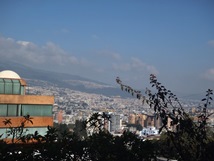
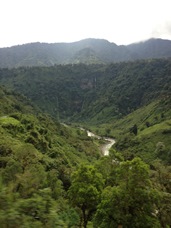
Also, as this area is popular, I am sure all of the rapids on these rivers have real names... but I don't know them.
Mi 0:
- Welcome to Ecuador (III). Right around the corner from put-in you enter a fun boulder garden that we ran down the right.
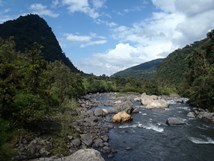
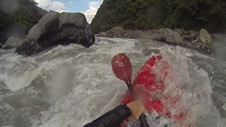
Boof (III). A small read and run rapid led to a nice boof that we hit down the center.
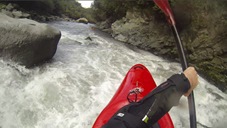
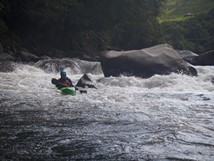
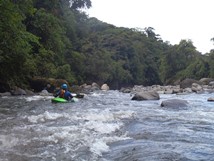
Cock of the Rock (IV). A long boulder garden with plenty of rocks to trip on or holes to get spun out in. We started on the right but then worked back to the middle.
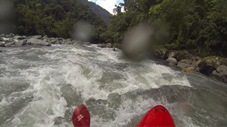
Boof (III). A fun boof appears in a side channel. The left main channel was class II, but the far right channel had a nice smear boof to hit.
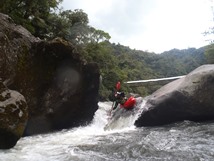
- Rock Island (III). A small rock island signaled this rapid. In front of the island was a sievy, log jam. Next to it was a river wide ledge. Not being sure of how big the hole was we all ran it far right off of a boof. At the low flow it would have been fine anywhere. Perhaps not at high flow.
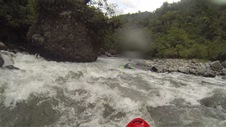
Island (III). Not long after there was a split in the river, we went left (which is the better channel). Where the two channels came back together there were some nice holes. We stayed left throughout.
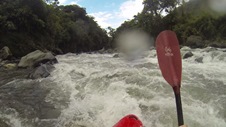
Hole (III+). A simple ramp led to a sticky hole. It was easy enough to get your nose over but getting stuck would be memorable. Scout from the left.
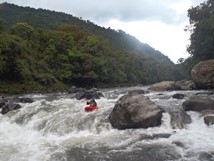
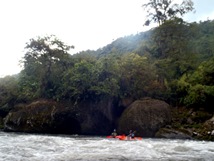
- Quijos Confluence (III). Just below the confluence there was a nice rapid that had a good little boof at the bottom on the far right, or you could just go far left around it.
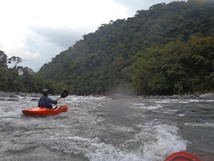
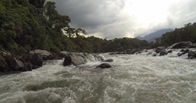
Boogie continues for 3.5 more miles
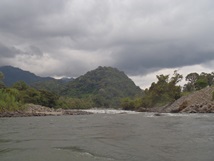
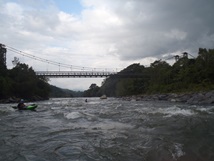
Take-out: Take-out at Bridge #4 which is off of a spur road in Borja off of E45 (downriver of Baeza). Grab a beer at Chris and Andreas and wait for the cab
Put-in: Take E45 towards Tena. In 2013 the paved road turned briefly to dirt, this was the put-in. There was a turnout with a trail down 100 yards to a foot bridge over the river.
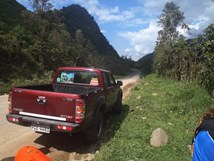
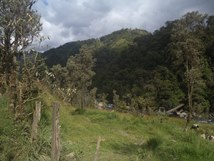
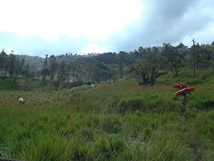
HTML Comment Box is loading comments...
